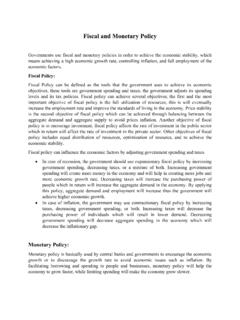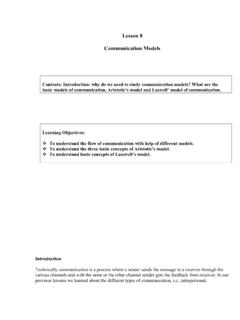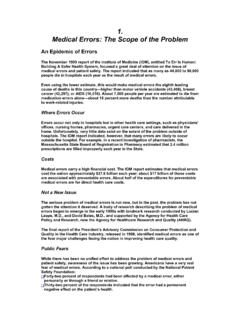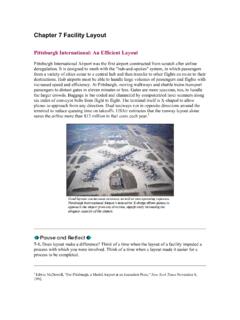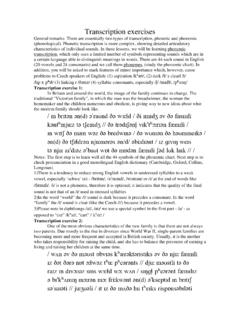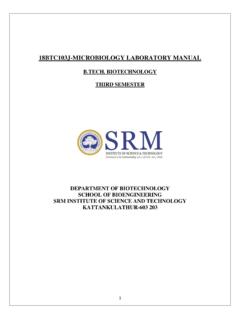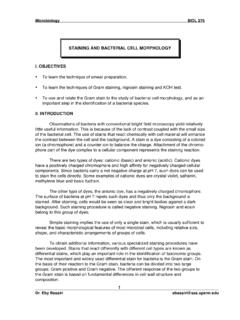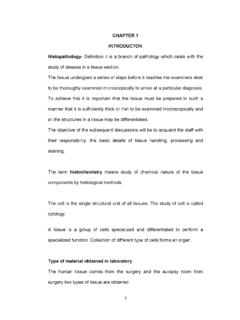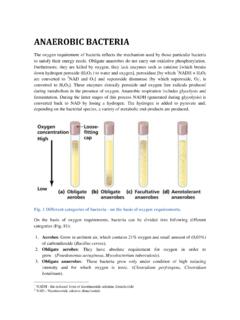Transcription of GENERAL BACTERIOLOGY 1. - Masaryk University
1 GENERAL BACTERIOLOGY 1. bacterial cell ( morphology , staining reactions, classification of bacteria) The protoplast is bounded peripherally has a very thin, elastic and semi-permeable cytoplasmic membrane (a conventional phospholipid bilayer). Outside, and closely covering this, lies the rigid, supporting cell wall, which is porous and relatively permeable. The structures associated with the cell wall and the cytoplasmic membrane (collectively the cell envelope) combine to produce the cell morphology and characteristic patterns of cell arrangement.
2 bacterial cells may have two basic shapes: spherical (coccus) or rod-shaped (bacillus); the rod-shaped bacteria show variants that are common-shaped (vibrio), spiral (spirillium and spirochetes) or filamentous. The cytoplasm, or main part of the protoplasm, is a predominantly aqueous environment packed with ribosomes and numerous other protein and nucleotide-protein complexes. Some larger structures such as pores or inclusion granules of storage products occur in some species under specific growth conditions.
3 Outside the cell wall there may be a protective gelatinous covering layer called a capsule. Some bacteria bear, protruding outwards from the cell wall, one or more kinds of filamentous appendages: flagella, which are organs of locomotion, fimbriae, which appear to be organs of adhesion, and pili, which are involved in the transfer of genetic material. Because they are exposed to contact and interaction with the cells and humoral substances of the body of the host, the surface structures of bacteria are the structures most likely to have special roles in the processes of infection.
4 Shape: this can be of 3 main types: round (cocci) - regular (staphylococci) - flattened (meningococci) - lancet shaped (pneumococci) elongated (rods) - straight (majority of them are like this; ) - short (coccobacilli; acinetobacters) - long (fibres) these are mainly found in OLD cultures - slender mycobacterium tuberculosis - robust lactobacilli, bacillus - with split ends - bifidobacteria - branching - nocardiae, actinomycetes - curved - campylobacters - with flat ends bacillus anthracis - spindle-shaped - fusobacteria - club-shaped - corynebacteria - pleomorphic haemophili - spiral helicobacter, spirilium Spiral bacteria (spirochetes).
5 These are different to the spiral bacteria mentioned above! They are tightly coiled bacteria. - Thick: Spirillium - Uneven: borrelia - Delicate, regular: Treponema - Slender with bent ends: Leptospira staining Two basic methods provide foundations for differential staining and detection of bacteria: the Gram stain and acid-fast stains. Bacteria are generally studied when fixed and stained. Smears or films of bacterial cultures and clinical specimens are usually fixed by heat, the slide being first throughly dried in air and then heated gently in a flame.
6 Vegetative bacteria are thereby killed, attached to the surface of the slide and preserve from undergoing autolytic changes. During staining , the coloured, positively charged cation of basic dyes such as methylene blue combines with negatively changed groups in the cell protoplasm, specially with the phosphate groups in the abundant nucleic acids. Acid dyes, having coloured anions, do not stain bacteria strongly except at very acid pH values, and thus can be used for negative staining . Negative or background staining is of value as a rapid method for the simple morphological study of bateria and yeasts.
7 In the case of bacteria, Gram s stain has the widest application, distinguisinhg them as Gram-positive or Gram-negative , according to wether or not they resist decoloration with acetone, alcohol or aniline oil after staining with a triphenyl methane dye, such as methyl violet, and subsequent treatment with iodine. The Gram-positive bacteria resist decoloration and remain stained a dark purple colour. The Gram-negative bacteria are decolorized, and are then ounterstained light pink by the subsequent application of safranin, neutral red or dilute carbol fuschin.
8 Gram reactivity appears to reflect a fundamental aspect of cell structure and is correlated with many other biological properties. Gram-positive bacteria are more susceptible than Gram-negative bacteria to the antibacterial actions of penicillin, acids, iodine, basic dyes, detergents and lysozyme, and less susceptible to alkalis, azide, tellurite, proteolytic enzymes, lysis by antibody and complement, and plasmolysis in solutes of high osmotic pressure. The probable mechanism of the Gram stain is attributed to differences in the permeability of the two essential cell wall types.
9 After staining with methyl violet and treatment with iodine, a dye-iodine complex is formed within the cell; this is insoluble in water but moderately soluble and dissociable in the acetone or alcohol use as the decolorizer. Under the action of the decolorizer, the dye and iodine diffuse freely out of the Gram-negative cell, but not from the Gram-positive cell, presumably because the cell wall of the latter is less permeable. Gram-positive bacteria become Gram-negative when their cell wall is ruptured or removed.
10 G+ G- 1. Fixation by flame 3 times 2. Gram stain 20 s 3. Lugol solution 20 s 4. Alcohol m x. 20 s 5. Aqua fontis rinse 6. Safranin 1 min 7. Aqua fontis rinse 8 Drying 2. Anatomy of the bacterial cell I contents of cytoplasm, cytoplasmatic membrane The cytoplasm, or main part of the protoplasm, is a predominantly aqueous environment packed with ribosomes and numerous other protein and nucleotide - protein complexes. bacterial nucleoid The genetic information of bacterial cell is mostly contain in a single, long molecule of double-stranded deoxyribonucleic acid (DNA).

